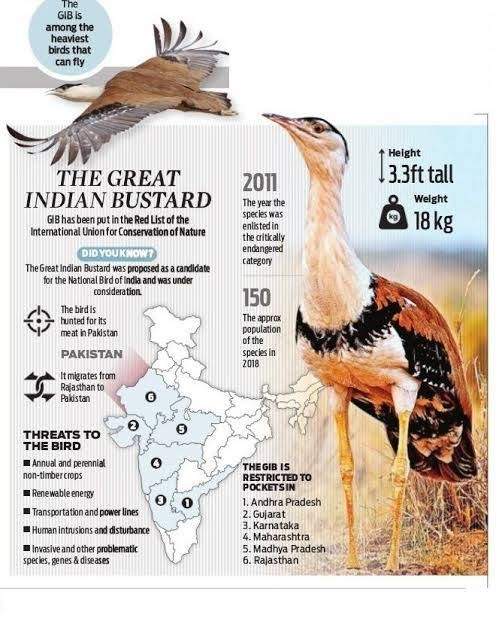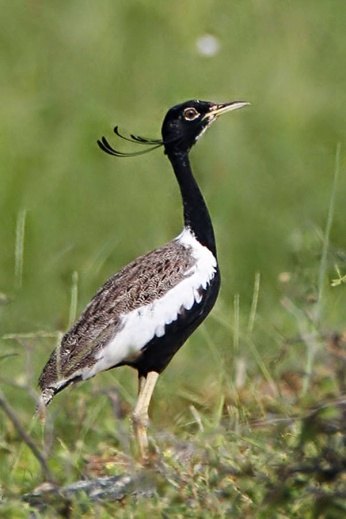Uttarakhand Switch to Hindi
Uttarakhand’s Old Lipulekh Pass
Why in News?
The old Lipulekh Pass, located at an altitude of 18,300 feet in the Vyas Valley of Pithoragarh district in Uttarakhand, will be accessible to the public from 15th September 2024.
- It would allow devotees to view the sacred Kailash Peak in Tibet from within the Indian territory.
Key Points
- The Kailash-Mansarovar Yatra via the Lipulekh pass was suspended in 2019 following the Covid-19 outbreak and the route has yet to be opened by the Chinese authorities.
- This sacred trek leads devotees and adventurers to Mount Kailash and Lake Mansarovar, located in the Tibet Autonomous Region of China.
Kailash Mansarovar
- The Kailash range’s supreme peak lies in the Chinese-occupied Tibet at the height of 6,675 meters.
- The pilgrimage to Kailash and to the sacred Mansarover lake that lies 30 km to its south, is run exclusively by a government organization, the Kumaon Mandal Vikas Nigam (KMVN).
- The organization works in collaboration with the Government of India’s Ministry of External Affairs and the Government of China.


Chhattisgarh Switch to Hindi
Single Window System 2.0
Why in News?
Recently, Chhattisgarh Chief Minister Vishnu Deo Sai launched the second edition of the 'Single Window System' (SWS) to facilitate speedy approvals of various clearances required for setting up industries.
Key Points
- The government will prioritize quick clearances and approvals to facilitate investors and new industrialists. Good governance and a zero-tolerance policy towards corruption are top priorities.
- The online facility helps simplify the process by reducing administrative physical interference in the grant of clearances and approvals.
- Single Window System (SWS) 2.0 offers over 100 facilities from 16 departments on its portal.
- The applicant only needs to log in once and will not need to reapply. If any department needs information during the process, the applicant can find out by logging in.
- No need to contact any office offline. Payment can be made through e-challan. Departmental officers have been given IDs and passwords to address applications.


Madhya Pradesh Switch to Hindi
Tiger Reserves to Remain Closed Till October
Why in News?
According to the sources, six tiger reserves in Madhya Pradesh have closed their core zones to the public and tourists.
- The reserves affected by this seasonal closure include Bandhavgarh, Kanha, Pench, Satpura, Panna, and Sanjay-Dubri.
Key Points
- One of the primary reasons the national parks are closed is that the monsoon season is a critical time for tigers and tigresses as they mate and prefer solitude.
- Any disturbance during this period can cause these majestic animals to become aggressive.
- This undisturbed period is essential for maintaining healthy tiger populations and supporting conservation efforts.
Bandhavgarh National Park:
- Known for its high density of Bengal tigers, Bandhavgarh National Park is one of the most popular tiger reserves in India. It also houses various other wildlife species such as leopards, deer, and numerous bird species.
Kanha National Park:
- Famous for its diverse wildlife and lush landscapes, Kanha National Park inspired Rudyard Kipling's The Jungle Book. It is renowned for its significant population of Bengal tigers, as well as barasingha (swamp deer) and other species of deer.
Pench National Park:
- Located on the border of Madhya Pradesh and Maharashtra, Pench National Park is famous for its dense forests and diverse wildlife. Visitors can spot tigers, leopards, sloth bears, and a variety of bird species.
Satpura National Park:
- It is characterised by its rugged terrain, deep valleys, and dense forests. It offers a unique experience of exploring the wilderness through jeep safaris, boat rides, and walking trails, allowing visitors to encounter wildlife like tigers, leopards, and sloth bears.
Panna National Park:
- It is renowned for its efforts in tiger conservation and is home to a significant population of these majestic cats. The park also boasts a rich biodiversity, including various species of deer, antelope, and birds.
Sanjay National Park:
- This national park, located in the Chhattisgarh-Madhya Pradesh border region, is known for its pristine forests and diverse flora and fauna. It is a part of the Sanjay-Dubri Tiger Reserve and provides habitat for tigers, leopards, and other wildlife.


Madhya Pradesh Switch to Hindi
AI-Based Fire Detection System
Why in News?
Recently, The Pench Tiger Reserve (PTR) has launched an advanced Artificial Intelligence-based system for early detection of forest fires.
Key Points
- The new system features a high-resolution camera with a visual range of 15 km, effectively covering more than 350 sq km of the reserve.
- The AI-powered platform, known as Pantera, leverages both the camera feed and satellite-based data to provide real-time alerts of forest fires within three minutes.
- The system also receives weather data related to temperature, precipitation, wind, etc, and analysing data with past fires, the system forecasts the probable future fires in the short term, which helps in planning fire control.
Pench Tiger Reserve (PTR)
- PTR is the joint pride of both Madhya Pradesh and Maharashtra.
- The Reserve is located in the southern reaches of the Satpura hills in the Seoni and Chhindwara districts in Madhya Pradesh, and continues in Nagpur district in Maharashtra as a separate Sanctuary.
- It was declared a National Park by the Government of Maharashtra in 1975 and the identity of a tiger reserve was granted to it in the year 1992.
- However, PTR Madhya Pradesh was granted the same status in 1992-1993. It is one of the major Protected Areas of Satpura-Maikal ranges of the Central Highlands.
- It is among the sites notified as Important Bird Areas (IBA) of India.
- The IBA is a programme of Birdlife International which aims to identify, monitor and protect a global network of IBAs for conservation of the world’s birds and associated diversity.


Rajasthan Switch to Hindi
Next Phase of Bustard Conservation
Why in News?
Recently, The Ministry of Environment, Forest and Climate Change (MoEFCC) has approved Rs 56 crore for the next phase of the conservation of Great Indian Bustard (GIB) and Lesser Florican.
Key Points
- The plan includes habitat development, in-situ conservation, completing the conservation breeding center, releasing captive-bred birds, and other activities.
- The National CAMPA (Compensatory Afforestation Fund Management and Planning Authority) had recommended the Wildlife Institute of India’s (WII) proposal to the governing body.
- Plans to recover the species first started in 2013 under the National Bustard Recovery Plan, which later gave way to the Bustard Recovery Project in 2016.
- Later, in July 2018, a tripartite agreement was signed between MoEFCC, Rajasthan forest department and WII.
- As part of the project run by the three parties, two GIB conservation breeding centres and one Lesser Florican centre are functioning in Rajasthan’s Sam, Ramdevra and Sorsan respectively.
- The team at Sam and Ramdevra built up a founder population by collecting GIB eggs from the wild, which were incubated and hatched artificially in the facility.
- Currently, there are approximately 140 GIBs and fewer than 1,000 Lesser Floricans left in the wild.
Great Indian Bustard
- The Great Indian Bustard (Ardeotis nigriceps), the State bird of Rajasthan, is considered India’s most critically endangered bird.
- It is considered the flagship grassland species, representing the health of the grassland ecology.
- Its population is confined mostly to Rajasthan and Gujarat. Small populations occur in Maharashtra, Karnataka and Andhra Pradesh.
- Protection Status:
- IUCN Red List: Critically Endangered
- Convention on International Trade in Endangered Species of Wild Fauna and Flora (CITES): Appendix 1
- Convention on Migratory Species (CMS): Appendix I
- Wildlife (Protection) Act, 1972: Schedule I
Lesser Florican (Sypheotides indicus)
- It is one of three bustard species endemic to India, the others being the Bengal florican and the Great Indian Bustard.
- In the local language, the bird is known as ‘tanmor’ on ‘kharmor’, derived from the root word ‘mor’ for peacock.
- The endangered bird is observed in Rajasthan, Madhya Pradesh, Gujarat.
- Conservation status:
- IUCN Status: Endangered
- Wildlife Protection Act,1972: Schedule I
- CITES: Appendix II


Jharkhand Switch to Hindi
169th Anniversary of Santhal Rebellion
Why in News?
Recently, the 169th anniversary of Santhal Rebellion was celebrated. The Prime Minister paid tribute to the sacrifices and bravery of the Santhal tribal community.
Key Points
- The Santhal uprising, one of the most noted events of revolt against the British Raj, took place in 1855 and 1857.
- This was India’s first major peasant uprising fueled by the implementation of the Permanent Land Settlement in 1793.
- It was led by four brothers, Sidho, Kanho, Chand, and Bhairav Murmu, along with sisters Phulo and Jhano and covered the regions of Bihar.
Santhal Tribe
- Santhals are the third largest scheduled tribe community in India after Gonds and Bhils.
- Their greatest concentration is in the states of Bihar, Jharkhand, West Bengal, and Orissa, in the eastern part of the country.
- Language:
- Their language is Santhali, a dialect of Kherwari, a Munda (Austroasiatic) language.
- Santhali, written in OI-Chiki script, is recognised as one of the scheduled languages in the Eighth Schedule to the Constitution.
- Religion:
- They are nature worshippers and could be seen paying respect at Jaher (sacred groves) in their villages.
- Occupation:
- Most Santhals are agriculturists, depending on their farmlands or forests.
- Seasonal forest collection is one of the important sources of their subsidiary income.










%20MPPCS%202025%20Desktop%20E.jpg)
%20MPPCS%202025%20Mobile%20E%20(1).jpg)










.png)
.png)











 PCS Parikshan
PCS Parikshan



